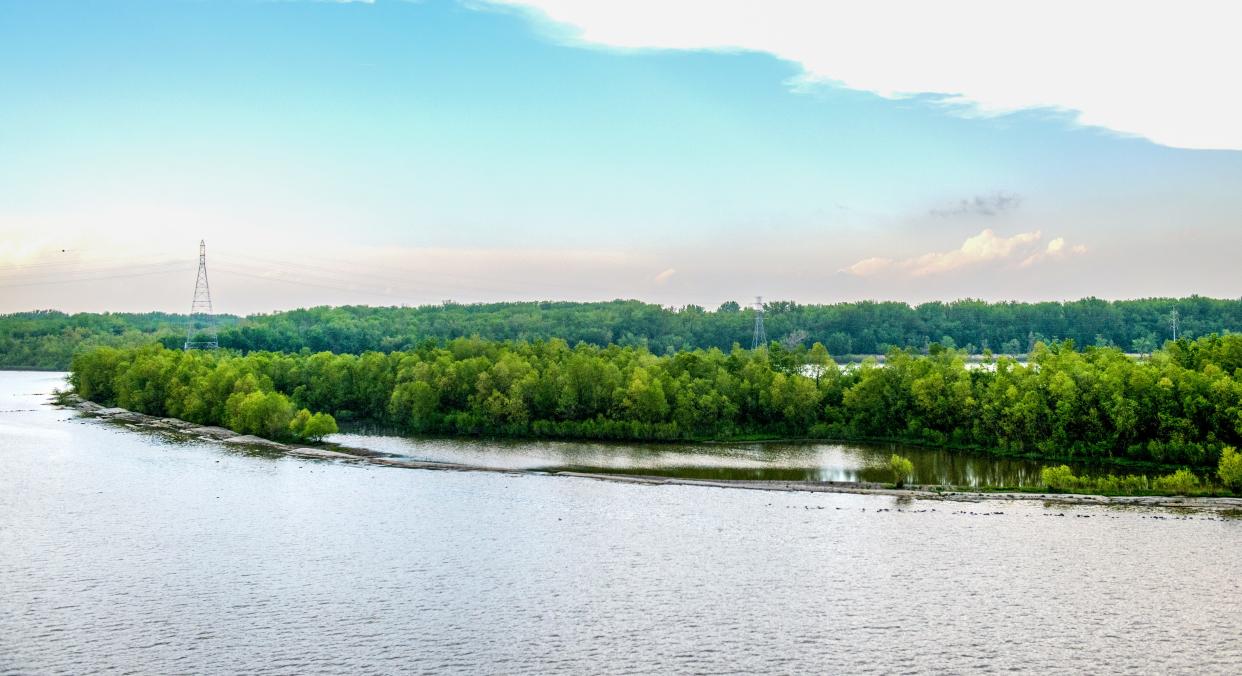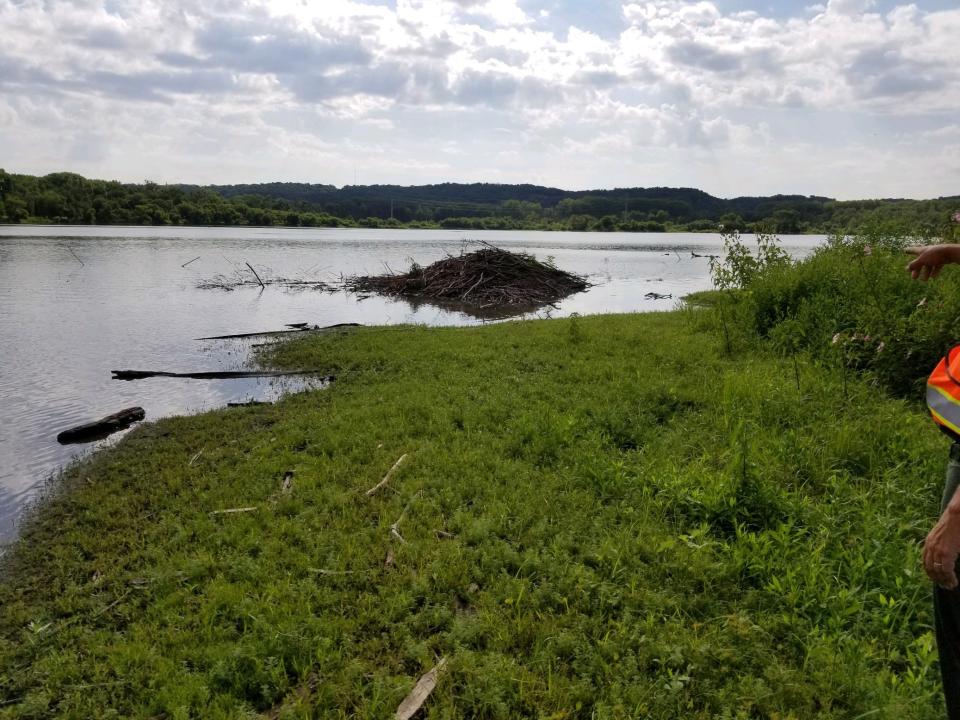Tucked along the Illinois River near Peoria, this man-made island helps nature thrive

Ask Dean is a Journal Star column focusing on all things Peoria: its history, mysteries, quirks and culture. Send your questions to dmuellerleile@pjstar.com.
Question: As I was driving westbound over the McClugage Bridge this morning, I noticed how much the trees on the island have grown. That got me to thinking, how long ago did they create that island, and does anyone know if it has served its purpose? — Jim Helms, Peoria
Answer: After years of planning and engineering, work on the man-made island in the Illinois River began in July 2009.
The goal was to deepen the river, which had been silting in for decades, and create better habitat for fish. (Outside the navigation channel, river depths were only 12 to 30 inches deep.) Some 200 acres of muck and silt were to be dredged from Lower Peoria Lake to create, eventually, three such islands. Funding for the multimillion-dollar project was assembled from state and federal sources. Removing silt from the river was a beneficial byproduct of the project.
By October 2011, a "squishy" island was taking shape. Some 70,000 cubic yards of dredged silt and river soil — nearly enough to fill both of Peoria's Twin Towers — had begun to form the outline of the 24-acre isle. Grasses, trees and other vegetation had taken root on the new banks, where ducks and geese had found refuge. Turtles were spotted on the new shore, as well as raccoon prints.
Ask Dean: 50 years ago, police standoff at a Peoria school shocked a city and the nation
By April 2012, the perimeter was largely completed, and the islet's core was being filled in.
A July 2013 Journal Star story noted the island's improved habitat: Beavers had made a home on the man-made landmass. The article noted additional plans, including "jetties surrounding the island and a handful of deep holes off the shore, providing calm, deep pockets of water for fish to spawn. The river’s prolific Asian carp population can spawn in the channel’s shallow, choppy waters, but the island’s extra features will support more delicate species, such as bass, catfish and bluegill."
One year later, the island was "ready for its close-up." A July 2014 Journal Star article reported, "The Army Corps of Engineers will host a ribbon-cutting ceremony ... signifying the completion of the ... project."
Anthony Heddlesten, an environmental engineer with the Army Corps, who hadn't visited the site since the previous November, said then, “I’m in shock at how much stuff we’ve got growing here.” The story added, "A trip across the 24-acre island meant pushing through a forest of cottonwoods, willows and hibiscus, many ranging in height from eight to 10 feet. Some willows top 20 feet in height. All the growth is a result of seeds that have blown or washed into the river."
The story said plans for the other two islands, to be located near the Spindler Marina in East Peoria, had been prepared by the Army Corps but funding had not yet been authorized.
An island update
Today, some of the trees on the island top 40 feet. Canada geese have settled in, sometimes amusingly aggressively.
Heddlesten, now the chief of the civil and environmental engineering department for the Rock Island District of the U.S. Army Corps of Engineers, recently commented on the project.
He said it has largely accomplished its goal: providing deep-water overwintering habitat for fish. Previously, he said, the only place deep enough for that was the actual navigation channel, where barges travel up and down, disturbing the fish. Heddlesten said secondary benefits include providing habitat for migratory birds and other wildlife.
He said the side channel around the island has been deepened, and more than 20 rock jetties extending into the river have been constructed.
Heddlesten said a total of 400,000 cubic yards of silt and soil was dredged from the river, but some areas near the island began to resediment very quickly. He added, "The river is constantly accumulating more silt." He said siltation "absolutely" remains a concern, affecting navigation and habitat: "Pick a river, it's a problem on all of them."
Heddlesten said a forestry team visited the island in 2020 and reported the trees, mostly willow, had grown as tall as 40 feet. He said the tree stands were "very healthy." He added, "We never planted a thing. It all came up on its own."
Meanwhile, wildlife is thriving. Heddlesten said the few unhealthy trees found were “stressed” due to beavers doing what beavers do — gnaw on trees. He recounted being chased by Canada geese defending their nesting sites.

Heddlesten said the project was one of his favorites: "I mean, who gets to build an island?" He has pictures of the isle in his office, and a chunk of fabric from the silt-bearing retainment bags used to build it hanging on the wall.
He said whenever he drives through Peoria, he makes sure to drive across the McClugage Bridge to take a look at the artificial island he helped create.
Officially, the island has no name, but Heddlesten noted a historical marker located nearby, in Chillicothe. The marker honors the Potawatomi leader Gomo and translates his name as "Resting Fish." Heddlesten added, "The purpose of the project is to make a place for fish to overwinter (or rest). ... Seems very apropos."
Whether it's a person, place or product, send your "Whatever happened to ...?" and "Wasn't there a ...?" questions, comments and suggestions to dmuellerleile@pjstar.com. Please put ASK DEAN in the subject line.
This article originally appeared on Journal Star: Man-made island near McClugage Bridge in Peoria, Illinois a refuge for fish, birds

